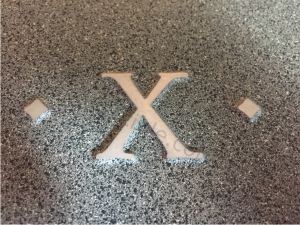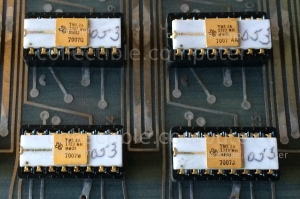Animator and CEO John Lasseter made an amazing dimpled design for the Image Computer that perfectly captures the transformation into Pixar the studio. Silver diamonds and a flecked Zolatone finish distinguish the remarkable metal bezel.
According to Alvy Ray Smith, the pioneering Pixar Image Computer had three sugar daddies. These included George Lucas and Steve Jobs as well as a founding educator in the New York Institute of Technology. The school was initially housed in a former Long Island garage and chauffeur's quarters.
Smith coined Pixar from a Spanish verb “to make pictures” which Jobs used upon buying the company in 1986 from Star Wars creator George Lucas. Lucas was in a divorce battle in range of his valuable movie franchise so he readily dropped his price from $100 to $10 million for a quick sale. Smith and his partner Edwin Catmull had a 5% ownership stake that they sought to protect as Jobs grew increasingly desperate waiting for their breakout hit - Toy Story.
"I have been shameless about stealing great ideas"
Alvy Ray Smith sent me an email clarifying the role of Steve Jobs in the design process. Jobs insisted on using frog design (small f and d) but didn't fully realize the rack mount nature of the computer as a large 80's video card (16 AMD ALUs in 4 Channels) that required another computer to work. The first version was like a death star in design and scope selling only a few dozen units. The second version, called PII, broadened its appeal, landing sales from Disney Studios and even medical imaging contracts.
The Pixar Image Computer was not purple. It was shades of gray. The outer box was dark gray, approaching black. The front of the box was Zolatone, a fleck painting process, with flecks of different shades of gray. The photo is of the product itself, not a prototype.
The role Jobs had in this was that he insisted that we use his favorite design company, Frog Designs, for the design of the box. We went along with the demand. Just part of the care and feeding of sugar daddies, as Ed (Catmull, my partner) and I used to say. Steve was the third of three sugar daddies on the way to Pixar, so we had experience in this arena!
Our engineering/manufacturing guys were furious because the design cost $150,000 as I recall and was a total luxury since nobody would see the box (it was meant to be rack mounted in a back room somewhere). This cost was totally unnecessary in other words, and just further jacked up the cost of an already expensive machine.
The dimpled square was a John Lasseter design, and so was the font choice for the name, and so were the little diamonds between the letters. So it's not clear what Frog contributed, other than a huge bill. I suppose the suggestion of Zolatone was worth the $150K!? In retrospect it was another Jobism, show not substance, that cost us not him. - Alvy Ray Smith - June 18,2015


